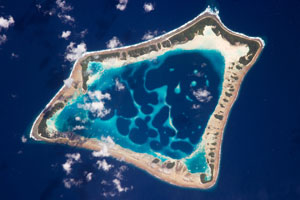Tokelau is at the forefront of the climate change fight. A small territory of New Zealand, its population of around 1,200 is spread across three coral atolls with a land area of only 12 square kilometres. The highest point of these atolls is just five metres above sea level. While Tokelau's size means its greenhouse gas emissions are a blip on the global radar, it also makes it one of the most vulnerable places in the world to live due to the changing climate.
Tokelau relies heavily on its marine resources to support its people. For this reason, the greatest risks to wellbeing are closely linked to environmental vulnerability. Tokelau lies in the Pacific cyclone belt, and is susceptible to both long periods of drought and storm surges. Combined with the growing impacts of climate change, the very existence of Tokelau is starting to come under threat.
The Government of Tokelau has decided to tackle its environmental challenges head on. As of November, Tokelau has become the first place in the world to operate completely on renewable energy [external link]. Most Pacific nations are dependent on fossil fuels to meet their energy needs. With the help of New Zealand, Tokelau has broken this reliance and embraced the benefits that solar power will bring to its people.
Australia's support to Tokelau is focused on helping the territory better adapt to the increasingly extreme climate conditions it is facing. We are providing funding to the Secretariat of the Pacific Community to train coastal fisheries managers, develop information materials, and carry out activities to improve access to clean drinking water for Tokelauans. Australia is also assisting the United Nations Development Programme to strengthen the coastal defences of Tokelau's three atolls.
There is no doubt it will be a hard trek for Tokelau as weather conditions around the world continue to change. But the commitment of the Tokelauan Government to address climate challenges on all fronts is helping to secure a future for the collection of South Pacific atolls.

